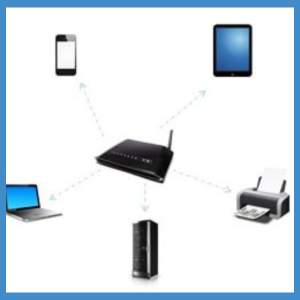A wireless local area network (LAN) enables multiple devices to exchange data. The remote neighbourhood utilizes high-recurrence radio waves and has a passage. It associates gadgets and conveys remotely.
W(LAN) may deal with many gadgets. At the point when at least one repeaters are added it very well may be effortlessly broadened. But the old Ethernet can be immediately moved up to the new rendition.
Versatile, gaming consoles, web sound frameworks, web gadgets and home machines.Such as PCs, tablets, and other gadget types are all essential for remote local area network.
The gadgets that join a remote passage (AP). Because it fills in as a point of convergence. Through the remote connection, correspondence can be available with passageways. So getting to the Ethernet network is straightforward.
This organization covers Urban areas and various gadgets. WLAN depends on IEEE 802 .11. It began in 1971. It created Teacher Norman Abramson’s work at the College of Hawaii.
Wireless Local Area Network: Pros and Cons
WLAN has two fundamental transmission modes for arrangement. There are two kinds of technology used for transmission, radio and infrared. Infrared innovation is not generally utilized since it requires a spotless view and can be effortlessly imped the things in its way. Accordingly, infrared is dishonest.
Nonetheless, commotion and impedance can influence remote frameworks. Atmospheric conditions like downpours or roars might be the reason for the impedance. Remote is as yet best but with specific drawbacks. Fantastic adaptability give the means of remote correspondence. The benefits and drawbacks of WLAN are recorded beneath.
Pros

- There is no requirement for perceived light for engendering.
- Nothing like trees, buildings, or other obstructions stands in the way of the sign.High data rate as a result of poor coverage.
- dependable channel of communication
- affordable for a place with little access.
- Wireless transmission offers exceptional versatility.
- Resource Exchange
- High Transfer Rates of Data
- Managed Data Centrally
- Cost-Efficiency
- Scalability
- Communication is simple.
- Security oversight
- Reliability
- Multi-User Application Support
- Neighborhood Internet Sharing
- Protection and redundancy
- Better Interaction
Cons

- This communication is quite vulnerable to interference and noise.
- It merely has a modest region of coverage.
- Communication is frequently not secure, and unauthorized access is common.
- You need a license.
- Restricted Access
- pricey setup
- Maintenance Difficulty
- security dangers
- Singularity of Fault
- Issues with Compatibility
- Wired Restrictions
- Internet Sharing
- Privacy Issues

